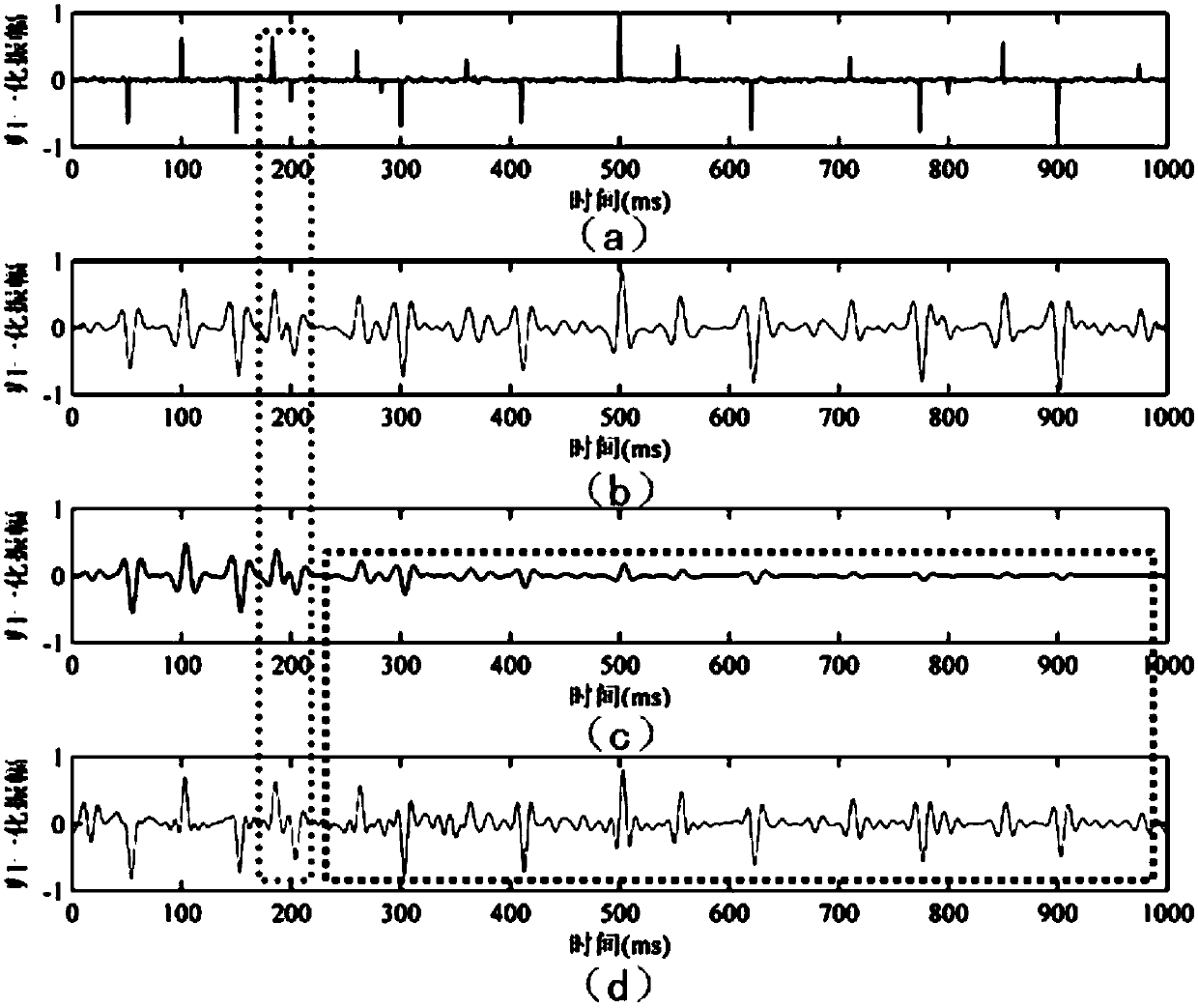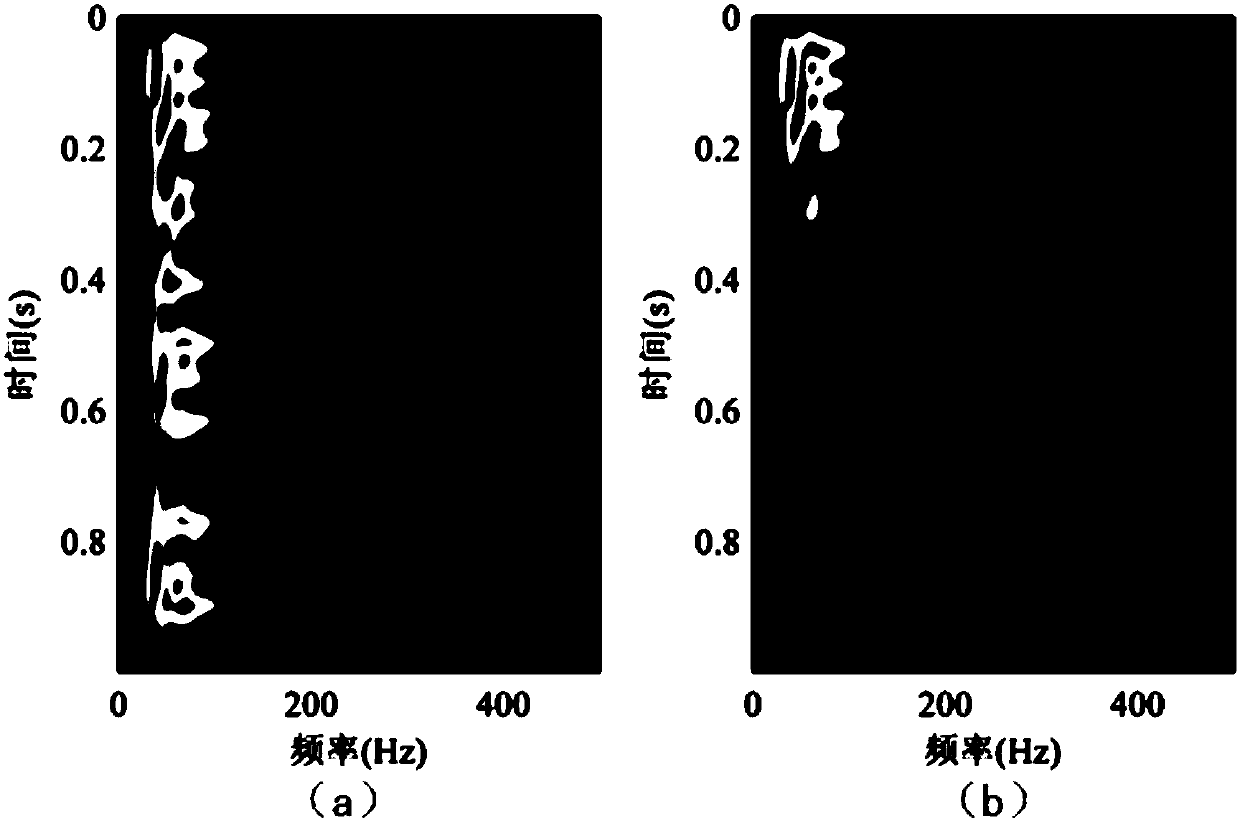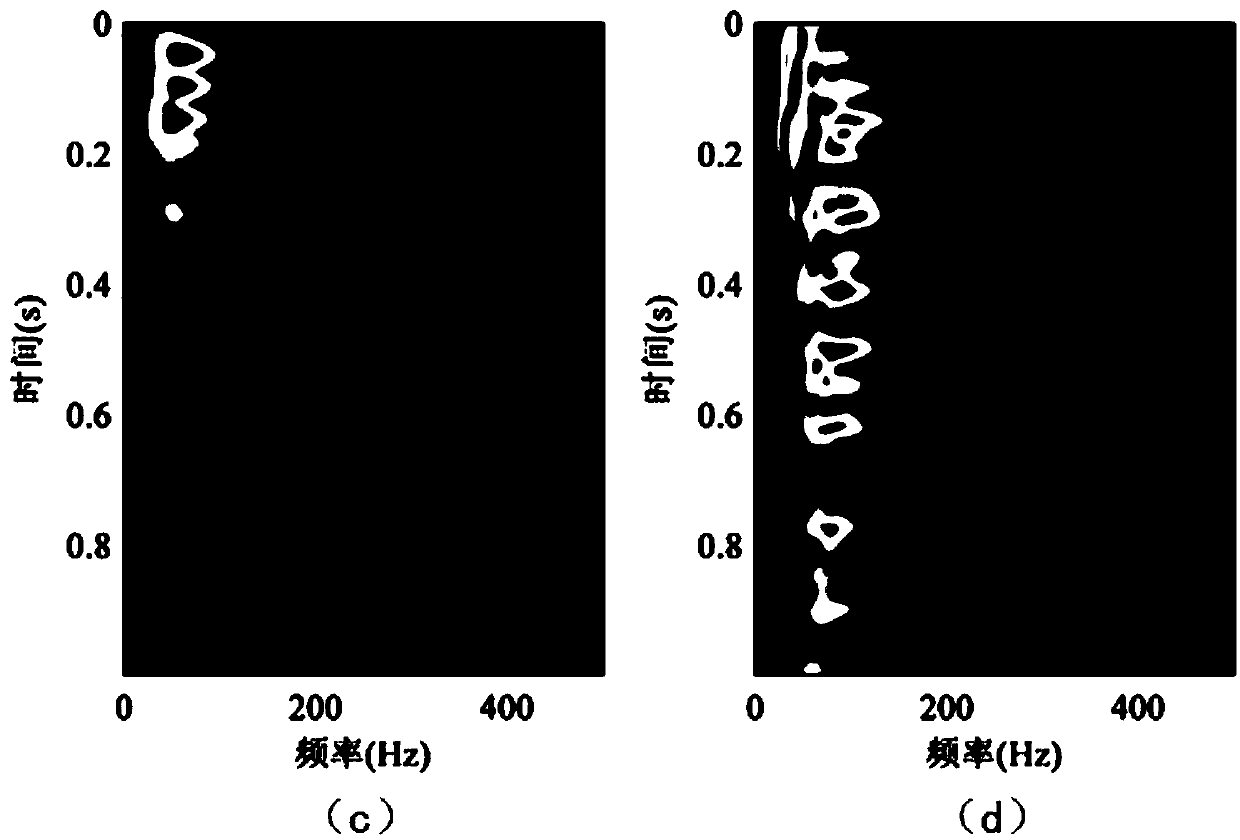Time-frequency domain deconvolution method on basis of Gaussian smoothing
A Gaussian smoothing and deconvolution technology, applied in the field of petroleum seismic exploration, can solve the problems of fat wavelet amplitude spectrum, low calculation efficiency, energy dissipation, etc. Effect
- Summary
- Abstract
- Description
- Claims
- Application Information
AI Technical Summary
Problems solved by technology
Method used
Image
Examples
Embodiment Construction
[0052] The present invention will be described in detail below in conjunction with the accompanying drawings. However, it should be understood that the accompanying drawings are provided only for better understanding of the present invention, and they should not be construed as limiting the present invention.
[0053] The time-frequency domain deconvolution method based on Gaussian smoothing provided by the present invention comprises the following steps:
[0054] 1. Acquiring seismic data, wherein the seismic data includes multi-channel non-stationary seismic records.
[0055] 2. Based on the Gaussian function and the generalized S-transform, the improved generalized S-transform formula is obtained, and the specific process is as follows:
[0056] S transform is a time-frequency domain analysis method. It absorbs and develops short-time Fourier transform and continuous wavelet transform. Its basic wavelet function is composed of the product of simple harmonic and Gaussian fu...
PUM
 Login to View More
Login to View More Abstract
Description
Claims
Application Information
 Login to View More
Login to View More - R&D
- Intellectual Property
- Life Sciences
- Materials
- Tech Scout
- Unparalleled Data Quality
- Higher Quality Content
- 60% Fewer Hallucinations
Browse by: Latest US Patents, China's latest patents, Technical Efficacy Thesaurus, Application Domain, Technology Topic, Popular Technical Reports.
© 2025 PatSnap. All rights reserved.Legal|Privacy policy|Modern Slavery Act Transparency Statement|Sitemap|About US| Contact US: help@patsnap.com



